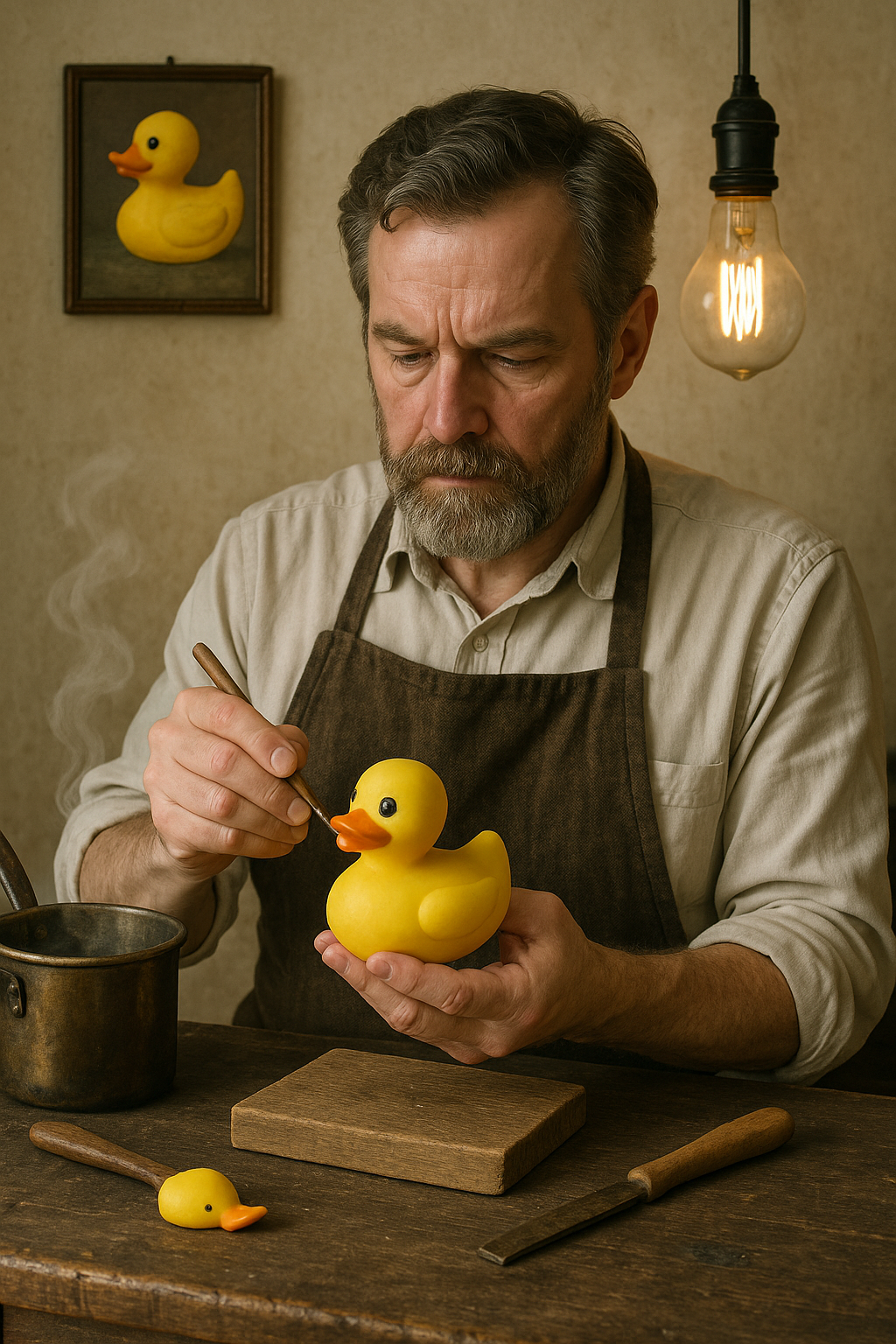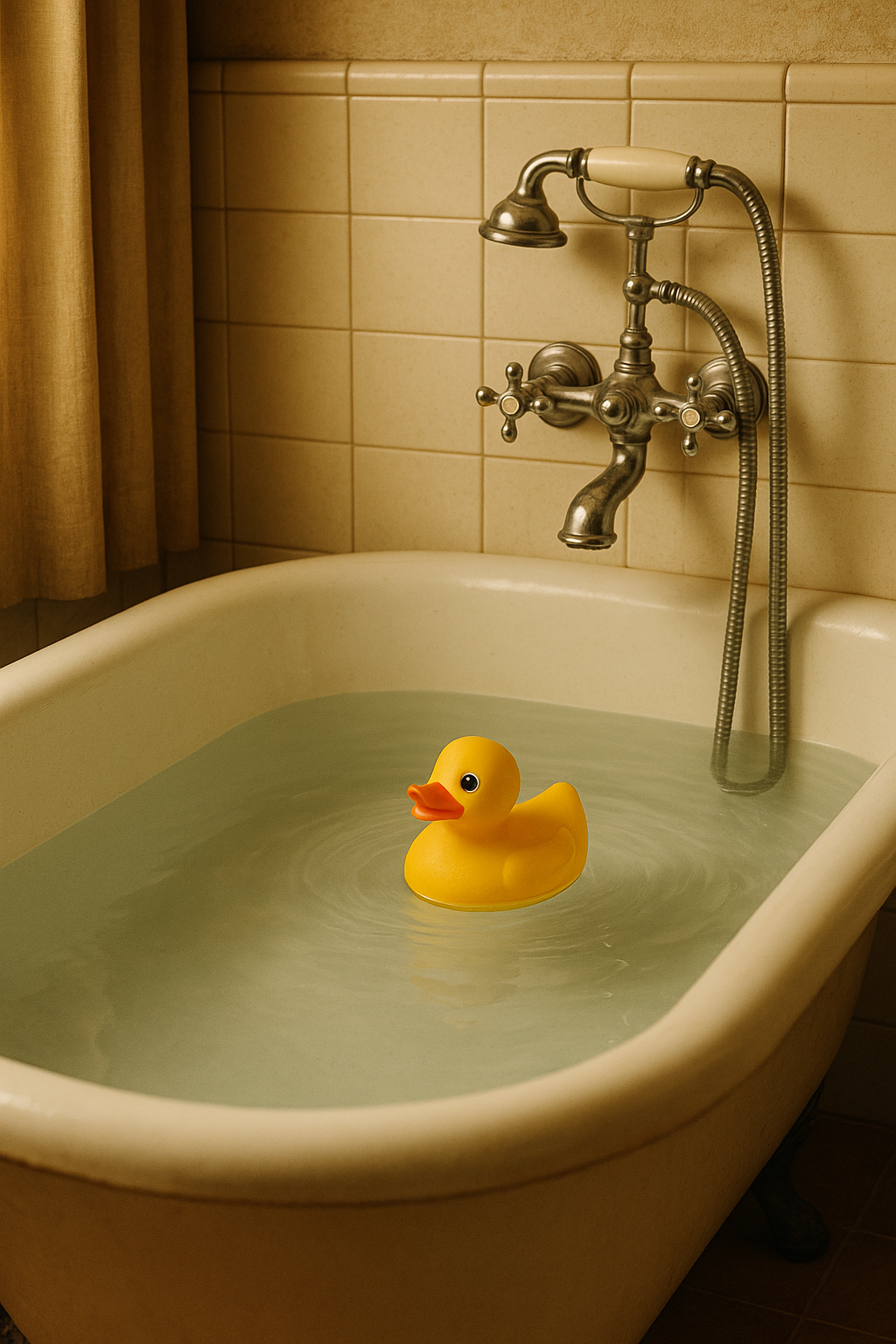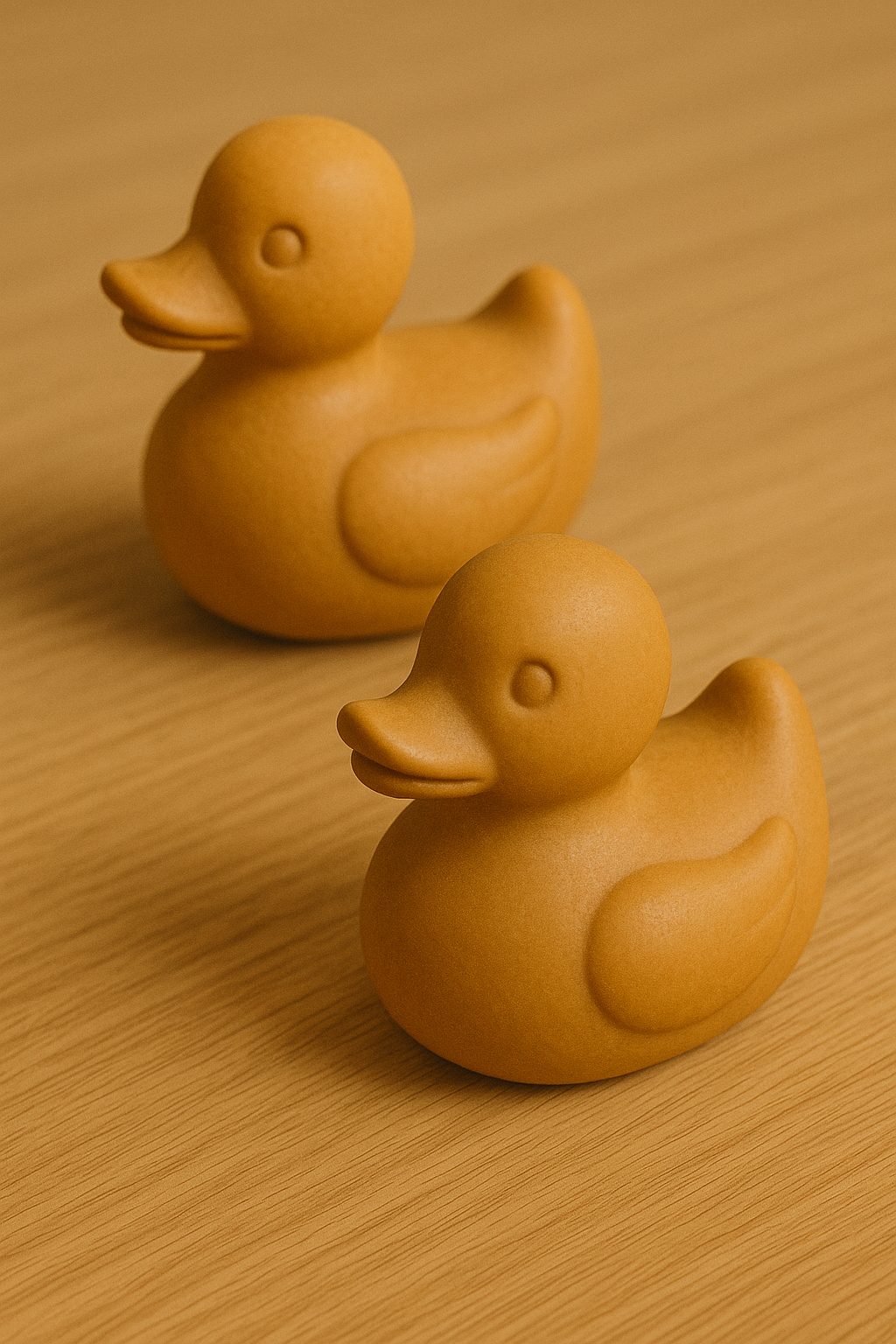Problem: Everyone knows what a rubber duck is, but hardly anyone knows where they came from or why they even exist.
Rubber ducks were invented in the late 19th century as chew toys[^1] before becoming iconic bath toys in the mid-20th century.
Curious about how a simple duck turned into a pop culture icon? Let’s uncover the real story behind the rubber duck.
How were rubber ducks invented?
Problem: Most people think rubber ducks were always meant for the bathtub—but that’s not how they started.
Rubber ducks were originally solid rubber chew toys[^2], not designed to float or squeak, made during the rise of rubber manufacturing.
The Industrial Origin of Rubber Toys
In the mid-to-late 1800s, the invention of vulcanized rubber[^3] revolutionized the production of household items and toys. Toy makers quickly realized that rubber was ideal for creating durable, safe playthings. Early rubber ducks were not the floating companions we know today. They were solid, heavy, and made specifically as teething aids for babies.
Duck shapes became a favored design due to their round contours and friendly appearance. These ducks were crafted without holes, sound, or color variation—simple utilitarian objects that fulfilled a basic need. However, their soft texture made them safer than wooden or metal toys, which were common at the time.
With the rise of synthetic materials like vinyl and latex[^4] in the 1940s, it became possible to create hollow, lighter ducks. These could float and be squeezed to make sounds, giving birth to the interactive duck that became synonymous with bath time.
| Time Period | Material | Key Feature |
|---|---|---|
| Late 1800s | Hard Rubber | Chew Toy for Babies |
| 1940s | Soft Rubber/Vinyl | Floating, Squeaking |
So, the rubber duck’s invention is deeply tied to industrial innovation and changing parenting practices.
What are some fun facts about rubber ducks?
Problem: Rubber ducks may seem simple, but they have quirky facts most people don’t know.
The largest rubber duck in the world is over six stories tall, and rubber ducks have even traveled the globe in scientific experiments[^5].
Surprising Trivia and Global Fame
Rubber ducks have been part of science, art, music, and even international travel. In 1992, a cargo ship en route from China to the U.S. dropped a container of 28,000 rubber ducks into the Pacific Ocean. These “Friendly Floatees[^6]” spread across oceans for decades, ending up in places like Hawaii, Alaska, Scotland, and South America. Scientists used their paths to study global ocean currents and environmental conditions.
In the world of art, Dutch artist Florentijn Hofman[^7] created a 61-foot tall rubber duck that traveled from Hong Kong to Toronto, becoming a viral sensation. Cities held festivals and media events around its arrival, turning the simple toy into a global public art statement.
Culturally, Ernie’s song “Rubber Duckie” from Sesame Street reached number 16 on the Billboard charts in 1970, cementing the duck’s place in American childhood.
Even today, rubber duck races for charity take place worldwide, raising millions for causes like children’s hospitals and environmental protection.
Why do rubber ducks have a hole in the bottom?
Problem: You’ve probably noticed the hole but never questioned it.
Rubber ducks have a hole to make them squeak and allow air to escape when squeezed, creating sound and easier floating.
Functionality Behind the Design
The small hole at the bottom of a rubber duck is a key part of its function. When squeezed, air pushes out through this hole, often creating the signature squeak that entertains children. This feature isn’t just for fun—it also prevents pressure buildup inside the toy, which could make it hard or rigid.
The hole also helps control buoyancy. By allowing some water to enter, it balances the toy, helping it float upright. Without it, rubber ducks might tip over or float unnaturally.
However, the hole presents hygiene issues. Water can get trapped inside, and if not drained properly, can lead to mold growth. Parents are now advised to squeeze out excess water and let ducks dry fully between uses. Some manufacturers have adapted by sealing the duck or using antimicrobial materials.
| Function | Purpose |
|---|---|
| Squeaker Port | Allows air in and out to make noise |
| Air Vent | Prevents toy from becoming too buoyant |
| Safety Design | Softens structure, avoiding choking hazards |
While simple, the hole in the duck is a combination of engineering, design, and user interaction.
Why did Peter Ganine invent the rubber duck?
Problem: Few people know that the classic duck toy was actually patented by an artist, not a toy company.
Peter Ganine patented a floating duck in the 1940s to blend art and play, launching the modern rubber duck as a fun bath toy.
Blending Art, Play, and Practicality
Peter Ganine was a sculptor known for his animal figurines. In 1947, he patented a floating duck toy molded from plastic. His goal was to create something that was both decorative and playful—an object that children could enjoy during bath time while also being visually pleasing.
Unlike earlier rubber ducks that were solid and utilitarian, Ganine’s design emphasized fun and interaction. It floated properly, included a squeaker, and featured a friendly expression. This toy gained popularity almost instantly, selling over 50 million units in the years that followed.
| Patent Year | Inventor | Contribution |
|---|---|---|
| 1949 | Peter Ganine | Floating, Squeaking Bath Duck |
His work shows how creativity can transform everyday objects into timeless cultural symbols.
What exactly is the purpose of a rubber duck?
Problem: Many adults think it’s just a cute bath toy—but it has more to offer.
Rubber ducks are used for entertainment, comfort, sensory development, and even branding or education.
More Than a Toy
Rubber ducks serve multiple functions beyond play. For children, they provide a soothing, consistent presence during bath time. Their simple design makes them easy to grasp, improving motor skills in toddlers. The bright colors and friendly faces encourage emotional bonding.
Therapists and educators also use rubber ducks in early childhood development, especially for sensory therapy. The squeaking sound stimulates hearing, while floating movements develop tracking skills. Some ducks even include features like lights or textures for added stimulation.
In marketing, rubber ducks appear in promotional campaigns, giveaways, and brand mascots. Companies often customize ducks with logos or special outfits to reinforce brand identity.
| Purpose | Description |
|---|---|
| Entertainment | Engages children in bath time |
| Sensory Aid | Stimulates sound, touch, and visual senses |
| Brand Icon | Used in marketing and fundraising events |
Their symbolic value continues to grow across cultures and generations.
What were the rubber ducks called before?
Problem: We call them rubber ducks now, but what did people say before they floated and squeaked?
Before becoming known as rubber ducks, they were simply referred to as rubber chew toys or duck figures.
A Name Evolution
In catalogs and advertisements from the early 1900s, rubber ducks were often listed as “rubber toys” or “animal figures.” Their duck shape was noted, but they lacked a specific name. Some stores referred to them as “teething ducks” or “rubber bird toys.”
As floating and squeaking features were added in the 1940s and 1950s, branding changed. Retailers began marketing them as “bath ducks” and eventually “rubber ducks,” especially once plastic replaced natural rubber.
This naming shift was reinforced by media like Sesame Street and packaging that labeled the toy directly. Once popular culture embraced the name, it stuck.
| Before 1940s | After 1940s |
|---|---|
| Rubber Chew Duck | Rubber Duck (Toy) |
| Duck Toy | Floating Bath Duck |
The change in name reflected a broader shift in the duck’s role and design.
From Soothing to Splashing
Originally, rubber ducks were not floating toys. Their purpose was to serve as teething tools for infants. The rubber material was firm but soft enough to relieve gum pain during teething. Their duck shape was charming and less intimidating than geometric or animal-less designs.
As new materials emerged, so did new opportunities. Soft plastics allowed ducks to float and squeak, aligning with evolving parenting strategies focused on stimulation and interactive play.
Today, the rubber duck is used in households, hospitals, and even educational environments. It has become a developmental aid, entertainment tool, and collectible item.
| Use Case | Time Period | Key Material |
|---|---|---|
| Teething Toy | 1880s–1930s | Hard Rubber |
| Bath-Time Fun | 1940s–Now | Soft Vinyl/Rubber |
Their use has evolved with technology, parenting, and design.
Conclusion
Rubber ducks began as chew toys and became floating icons—thanks to evolving materials, clever design, and cultural charm.
[^1]: Learn how early rubber ducks helped teething infants.
[^2]: Discover why early ducks were solid and not designed for water play.
[^3]: Understand the vulcanization breakthrough that enabled rubber toy production.
[^4]: Explore how vinyl and latex innovations made bath ducks possible.
[^5]: See how scientists used rubber ducks to study ocean currents.
[^6]: Read about the “Friendly Floatees” story and its environmental value.
[^7]: Discover how Florentijn Hofman’s giant duck turned into a global art phenomenon.














